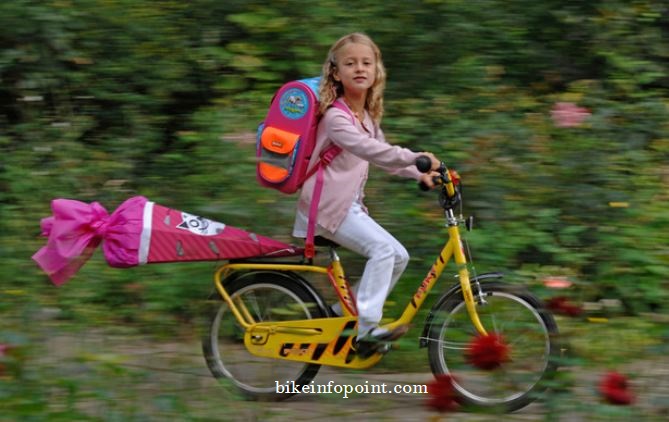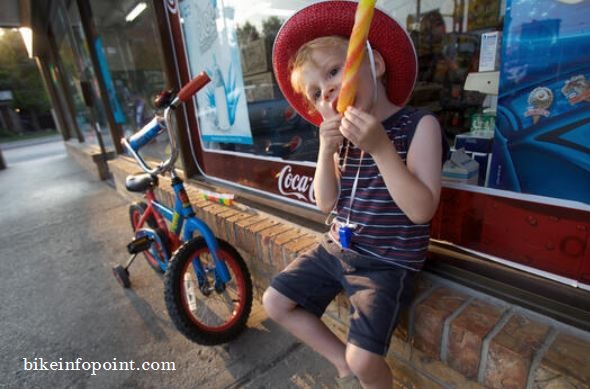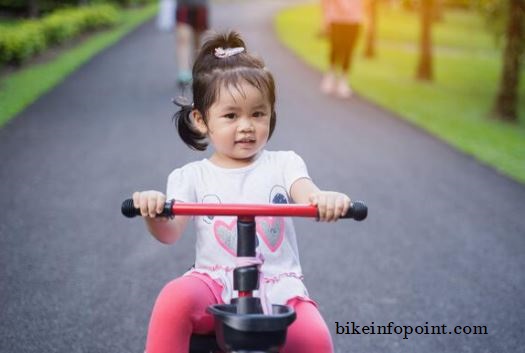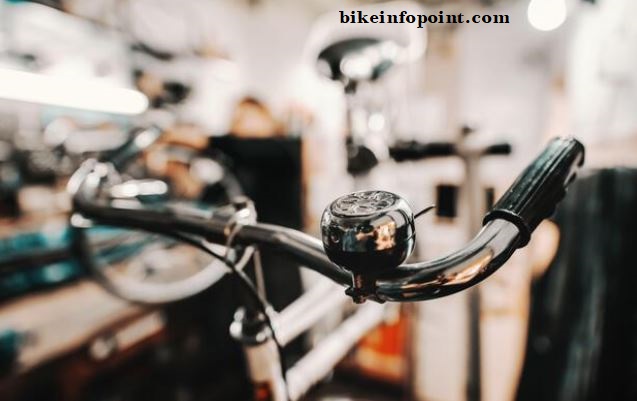
What age for first bike?
Biking is a popular mode of transportation and recreational activity that offers numerous benefits. Owning a bike allows individuals to easily and cheaply travel short distances such as to work, school or local shops and restaurants. It can also provide a convenient and eco-friendly alternative to driving or using public transportation.
In addition to the practical benefits, biking can also have numerous positive effects on physical and mental health. Regular biking can help to improve cardiovascular fitness, strengthen muscles and maintain a healthy weight. It can also reduce stress and improve mental well-being by providing an opportunity for outdoor exercise and relaxation.
Owning a bike can have many positive impacts on an individual’s daily life and overall health. It is an important and worthwhile investment for people of any age.
Table of Contents
ToggleAge Considerations for Purchasing a Bike

Physical development and ability to ride: When considering the best age to purchase a bike, it is important to consider the physical development and ability of the rider. Children should be able to reach the pedals and handlebars comfortably and have the coordination and balance necessary to ride safely. For younger children, this may mean starting with a balance bike or tricycle and gradually progressing to a two-wheeled bike with pedals as they gain strength and skills. Older children and adults may be able to handle more advanced bikes with multiple gears and specialized features, depending on their experience and interests.
Age appropriate bike options: The age of the rider can also affect the type of bike that is most suitable. Children’s bikes are typically designed with smaller frames, wheels, and components to accommodate their smaller size and weight. They may also have additional features such as coaster brakes or chain guards to make them safer and easier to use. On the other hand, adult bikes are designed for larger bodies and may have more advanced features such as multiple gears, suspension systems, and disc brakes. It is important to choose a bike that is appropriately sized and equipped for the rider’s age and ability level to ensure a safe and comfortable ride.
Factors to Consider When Buying a Bike for any Age
There are several factors to consider when buying a bike for any age:
Type of bike: The type of bike that is most suitable will depend on the intended use of the bike and the preferences of the rider. Some common types of bikes include road bikes, mountain bikes, hybrid bikes, and cruiser bikes. Road bikes are designed for speed and efficiency on paved surfaces and are best suited for longer distance rides or commuting. Mountain bikes are designed for off-road terrain and typically have wider tires, stronger frames, and more advanced suspension systems. Hybrid bikes are a combination of road and mountain bikes and can be used for a variety of purposes, including commuting and recreational riding. Cruiser bikes are designed for comfort and leisurely rides and are often used for short trips around the neighborhood or beach.
Size and fit of the bike: It is important to choose a bike that is the appropriate size and fit for the rider to ensure comfort and safety. Bikes that are too small or large can be difficult to control and may cause discomfort or strain on the rider. When purchasing a bike, it is recommended to try out different sizes and adjust the seat and handlebars to find the most comfortable and efficient position.
Cost and budget: The cost of a bike can vary greatly depending on the type, brand, and features of the bike. It is important to consider the budget and prioritize the features that are most important to the rider. In some cases, it may be worth investing in a higher quality bike that will last longer and provide a better ride experience, while in other cases a more affordable option may be suitable. It is also important to consider ongoing maintenance and repair costs, as bikes will require regular care and may need occasional repairs or replacements of parts.
Factors to Consider when Choosing a Bike for a Child

Age: Age is an important factor to consider when choosing a bike for a child. Because it will determine the size and type of bike that is appropriate. Children’s bikes are generally available in small, medium, and large sizes and it is important to choose a size that is appropriate for the child’s age and height.
Height and weight: Height and weight are also important factors to consider when selecting a bike for a child. It is important to choose a bike that is the right size for the child. Because a bike that is too large or too small can be difficult to ride and may be unsafe. To determine the right size bike, it is recommended to use the child’s height and inseam measurement as a guide.
Physical ability and coordination: Physical ability and coordination are important considerations when choosing a bike for a child. Because they will determine the child’s ability to ride the bike safely and effectively. Children just starting to ride a bike may benefit from a bike with training wheels. While more experienced riders may be ready for a bike without training wheels. It is also important to consider the child’s ability to control the bike, including braking, shifting gears (if applicable), and turning.
Interest and motivation: It is also important to consider a child’s interest and motivation when choosing a bike. This can play a role in their enjoyment of the activity and their willingness to continue riding. If a child is excited about bike riding and motivated to learn, they are more likely to stick with it and continue to improve their skills. On the other hand, if a child is not interested in bike riding or lacks motivation, they may struggle to learn and may lose interest quickly.
Recommended Ages for Children’s Bikes
Balance bikes (no pedals) 18 months to 5 years: Balance bikes are also known as push bikes or run bikes. These bikes are without pedals and are designed to help children learn to balance and steer. while they are walking or running. These bikes are ideal for children who are just starting to learn to ride. It allows children to focus on balancing and steering without worrying about pedaling. Most balance bikes are suitable for children ages 18 months to 5 years. Although some models may have age recommendations that range from 1 to 6 years or older.
Pedal bikes with training wheels(3 to 7 years): Pedal bikes with training wheels are bikes with pedals that also have small wheels attached to the rear of the bike to help children learn to ride. Training wheels are a good choice for children who are ready to learn to pedal but still need some stability and support. Most pedal bikes with training wheels are suitable for children ages 3 to 7 years, although some models may have age recommendations that range from 2 to 8 years or older.
Pedal bikes without training wheels(5 to 10 years): Pedal bikes without training wheels are bikes with pedals that do not have any additional stability features. These bikes are suitable for children who have mastered balancing and steering on a bike and are ready to learn to pedal and ride on their own. Most pedal bikes without training wheels are suitable for children ages 5 to 10 years. Although some models may have age recommendations that range from 4 to 12 years or older.

Bike Riding Some Benefits for Children
Bike riding is a fun and enjoyable activity that can provide numerous benefits for children’s physical and mental development.
Physically, bike riding can help improve children’s balance, coordination and muscle strength, as well as increase their cardiovascular fitness. It is also a low-impact form of exercise that can be enjoyed by children of all ages and abilities.
Mentally, bike riding can help children develop problem solving and decision-making skills. Also boost their confidence and self-esteem. It can also provide an opportunity for children to explore and learn about their environment. Which can promote curiosity and creativity.
In addition to this benefits, bike riding can also be a social activity. That allows children to interact with their peers and build friendships. It can also provide a sense of independence and freedom.
Read More Article
10 Amazing reasons why we love cycling
10 Health Benefits of Cycling: Why Every Cyclist Needs to Know These!
Encouraging children to start bike riding at an early age can help them develop important skills and confidence. It will serve them well throughout their lives. Bike riding can help children learn to balance, coordinate their movements and problem-solve. These are all valuable skills that can transfer to other areas of their lives. In addition, bike riding can boost children’s self-esteem and confidence. Because they learn to navigate and explore their environment on their own.
Find a bike that is age and size-appropriate. Also, ensure it is properly fitted and adjusted for the child. Overall, bike riding can be an important and enjoyable activity for children of all ages.


